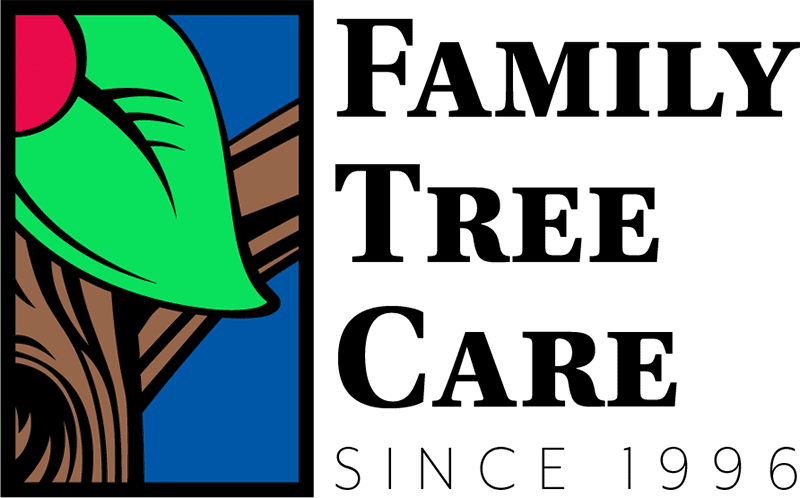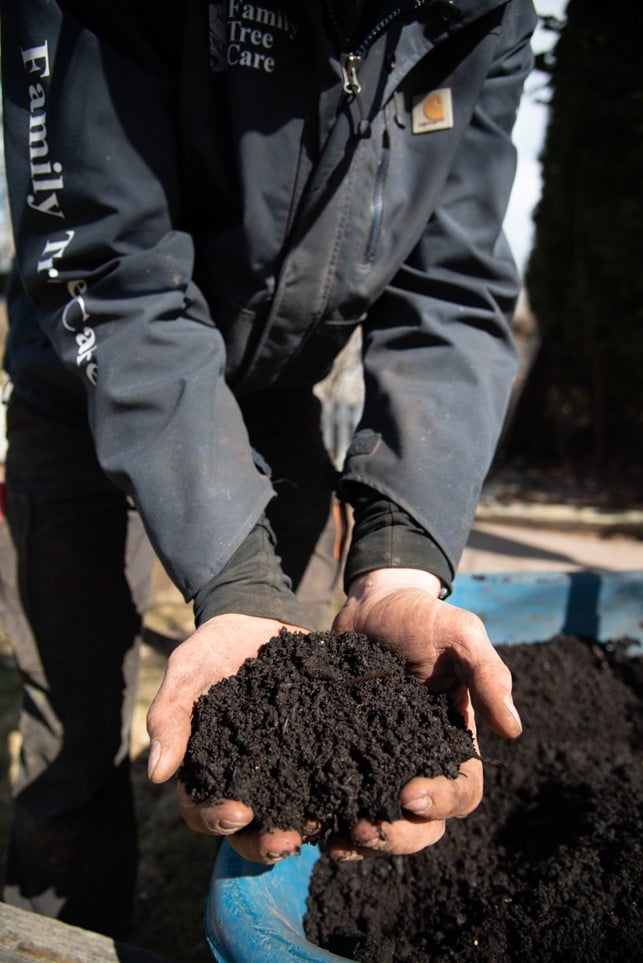Is there a tree on your property that you really care about? Maybe your kids grew up climbing it or maybe it really enhances the beauty of your landscape. Either way it’s a good idea to give your special tree a little extra love.
At Family Tree Care we think the best way to give our favorite trees some extra attention is by feeding them with compost. We often call this “composting” but it is really just amending the soil by adding nutrient rich compost to the tree’s root zone. Trees use photosynthesis to turn carbon dioxide and water into sugars, which they use to feed themselves, but they also need other nutrients to survive. Adding compost to a trees root zone is a great way to add some of these extra nutrients to the soil around a tree.
Composting is also a great way to reduce the intensity of soil compaction in a tree’s root zone. Historically trees grow in forests where the soil is soft and fluffy and easy for roots to penetrate. The trees that we deal with as arborists are often positioned in a yard where instead of soft soil the tree roots are fighting to work their way through hard, compacted soil. The soil in urban areas gets compacted from being driven on by lawn mowers or heavy equipment. Additionally, grasses dense root network makes it more difficult for tree roots to grow. Composting can help alleviate soil compaction because compost is full of active microbes that work to break down organic matter which aerates the soil.
When we compost a tree the first thing we do is spread a layer of hay. This accomplishes two things. As the hay decomposes it adds nitrogen to the soil, which is an important nutrient for tree growth. The layer of hay also kills the grass around the tree. Less grass means the tree isn’t fighting for nutrients and the thick mat of grass roots will no longer hinder tree root growth.
Next, we lovingly spread nutrient rich compost on top of the layer of hay. The compost is full of active microbes which break down the organic matter, releasing nutrients into the soil. The three most important nutrients for tree growth are nitrogen, phosphorous, and potassium; all of which are present in good compost. It is important not to add too thick a layer of compost because the top 18 inches of soil is where most of the trees roots are found and too much material on top of them prevents an adequate amount of oxygen from reaching the roots. We usually aim to add 3 to 4 inches of compost to a large tree’s root zone.
The last step in our composting process is to add a layer of mulch. This is an extra step mostly to enhance the aesthetic of the job. A layer of mulch helps keep weeds down and it may also help your newly composted tree match the other garden beds in your yard. It is important when adding mulch not to pile on too much and certainly not to have it up against the trunk of the tree. Piling mulch against the trunk of a tree, especially a young tree, can create longterm structural defects in the tree’s buttress roots. This is a mistake that landscapers often make and it can be detrimental to the tree’s longterm health and structural integrity.

At Family Tree Care we are convinced that composting is the least intrusive, best way to give your tree some extra love. It is best done annually and in our opinion by a professional!




